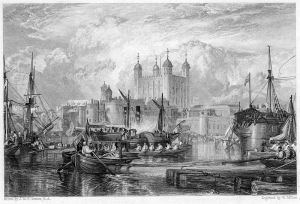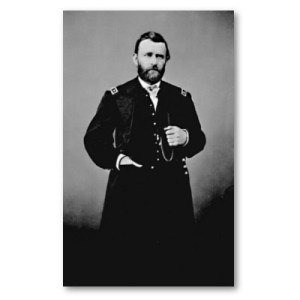Lenora Rogers's Blog, page 122
November 25, 2015
Matthew Bourne’s Swan Lake | Excepts from Act II….
 Originally posted on NYC Dance Stuff:
Originally posted on NYC Dance Stuff:
Matthew Bourne’s Swan Lake was first staged at Sadler’s Wells theatre in London in 1995. The longest running ballet in London’s West End and on Broadway, it has been performed in the UK, Los Angeles, Europe, Australia, Japan, Israel and Singapore.
Original premiere in 1995, performed in London’s West End and toured across UK, USA, Europe, Japan Revived for Sadler’s Wells 2004 and returned for extended seasons in 2006/7, 200...Queen Mary I’s Death
 Originally posted on tudors & other histories:
Originally posted on tudors & other histories:

On the 17th of November 1558, Queen Mary I passed away. She was forty two. Immediately, her coronation ring was taken to Elizabeth I who upon receiving quoted from one of the psalms declaring, quite coincidentally under an oak tree as one of her namesakes supposedly had been under when Edward IV found her, that “this is the Lord’s doing; it is marvelous in our eyes.” Elizabeth was the new queen, she would go on to become the longest reigning mo...
Mary Shelley
Although Mary Godwin Shelley lived in the restrictive Victorian era where a women’s place was in the home, tending to husband and children, she paved an unconventional, decidedly non-Victorian path through life. She established a substantive literary career while contending with the obstacles of single parenthood and depression.
View original 1,058 more words


November 23, 2015
Bataan Death March
 Originally posted on Exequy's Blog:
Originally posted on Exequy's Blog:

The Bataan Death March was the forcible transfer from Saisaih Pt. and Mariveles to Camp O’Donnell by the Imperial Japanese Army of 60,000–80,000 Filipino, and American (including Filipino-American) prisoners of war which began on April 9, 1942, after the three-month Battle of Bataan in the Philippines during World War II. About 2,500–10,000 Filipino and 100–650 American prisoners of war died before they could reach their destination. The reported death to...
Slang in the 1850s (Snippets 42)
 Originally posted on Windows into History:
Originally posted on Windows into History:
 Tower of London engraving by William Miller, 1832
Tower of London engraving by William Miller, 1832
In 1859, The Vulgar Tongue was published, written by Ducange Anglicus. This is clearly a pseudonym, but the author’s real identity is unknown. The book is subtitled A Glossary of Slang, Cant, and Flash Words and Phrases, Used in London, from 1839 to 1859. A lot of the entries are simply cockney rhyming slang (in fact, this book is probably the most useful source for studying the early development o...
Treasure and mystery in Byzantine Cappadocia.
 Originally posted on The History of the Byzantine Empire:
Originally posted on The History of the Byzantine Empire:
 Before the Romans, other ancient civilisations, notably the Achaemenid Empire, once inhabited the mountainous region of central Anatolia called Cappadocia. In the Christian era, as early as the 4th century, important monastic settlements began to form in this largely semi-arid region. Set amongst a spectacular landscape, formed by volcanic ash and lava and eroded by weather over time, you will find a panoramic view of ‘fairy chimneys’...
Before the Romans, other ancient civilisations, notably the Achaemenid Empire, once inhabited the mountainous region of central Anatolia called Cappadocia. In the Christian era, as early as the 4th century, important monastic settlements began to form in this largely semi-arid region. Set amongst a spectacular landscape, formed by volcanic ash and lava and eroded by weather over time, you will find a panoramic view of ‘fairy chimneys’...
November 20, 2015
Acadian exiles in Ipswich
Four Years of the Irish at War in Poetry & Song
 Originally posted on Irish in the American Civil War:
Originally posted on Irish in the American Civil War:
As we discovered in the excellent recent guest post by University of Edinburgh scholar Catherine Bateson (see here), poetry and song could be extremely important methods forIrish-Americans to communicatetheir views and experiences. Readers regularly sent in their efforts to be printed in newspapers like theNew York Irish American Weekly, allowing us to chart how key events of the day were portrayed inlyrical form. Although undoubtedly of...
November 19, 2015
Wookey Hole Caves, Mendip Hills, Somerset
 Originally posted on The Journal of Antiquities:
Originally posted on The Journal of Antiquities:
 Wookey Hole Cave River Axe (photo credit: Pierre Terre (Wikipedia)
Wookey Hole Cave River Axe (photo credit: Pierre Terre (Wikipedia)
OS grid reference:ST 5320 4796. The Somerset village of Wookey Hole, 1 mile west of Lower Milton,at the southern side of the Mendip Hills hasbecomefamous for its deep caves which have, over the past two-hundred years, yielded up many archaeological finds from prehistoric times, but thecaves here at Wookey have been a tourist attraction from as far back as the 15th century. I...
General Grant in New Jersey
 Originally posted on Presidential History Blog:
Originally posted on Presidential History Blog:
 General Ulysses S. Grant, the most famous man in America after 1865.
General Ulysses S. Grant, the most famous man in America after 1865.
General Grant was the most famous person in the country after the Civil War.
All the rich and powerful and famous were anxious to court his favor, and the General usually obliged.
A Tale of Gifts and Laws
Simply put, there were always laws on the books against gifts of out and out bribery. But it would not be until well into the twentieth century that saw laws covering “sof...


 Originally posted on
Originally posted on 



